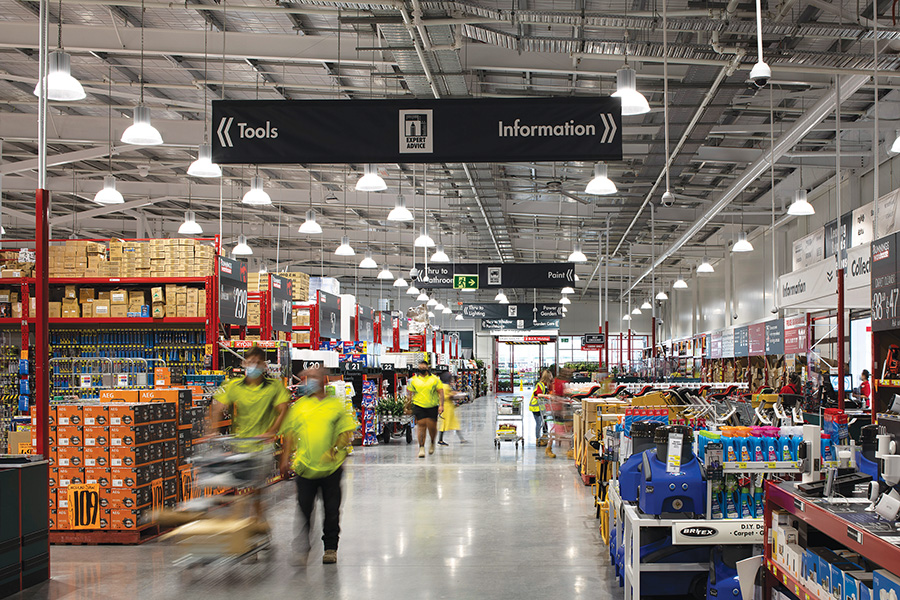It’s been a long time coming – a tax on low value goods purchased via the internet. It’s been somewhat of an acrimonious debate; reason has oft given way to emotion, commercial reality has trumped fairness and intelligent comment has often been interpreted as self-interest. Angus Nardi gives us a concise, reasoned and accurate account of the issue.
1 July 2017 will mark a symbolic day. This is because, to channel the words of a former Prime Minister, a controversial tax loophole is due to be ‘dead, buried and cremated’.
On 16 February, Treasurer Scott Morrison tabled legislation into Federal Parliament to apply the long-awaited Goods and Services Tax (GST) on ‘low value’ goods imported by consumers.
Subject to its passage through Parliament, the new laws are scheduled to commence on 1 July 2017. This was confirmed as a key measure in the 2016-17 Federal Budget announced in May last year.
As a revenue measure, it is estimated to generate GST revenue of $300 million across the 2017-18 to 2019-20 period.
In the grand scheme of the GST, which is estimated to generate $60 billion in 2016-17, it’s fair to say that this isn’t all that substantial.
But that’s not the point, even though its revenue impact has remained a point of contention. (For instance, on the day the legislation was tabled, Crikey’s politics writer Bernard Keane tweeted: “Remember that new tax to punish consumers for shopping online? It just got introduced – and will raise f*** all”).
The key point is, rather, that this reform will deliver tax integrity, and tax fairness, by applying the same tax regime to imported goods as applies to domestic goods.
As the Treasurer’s Explanatory Memorandum for the Bill states, in the context of Australian consumers increasingly purchasing goods from overseas: “The fact that neither the supply nor the importation of such low value goods is subject to the GST represents a significant risk to the integrity of the GST system. It also places Australian based suppliers at a growing competitive disadvantage”.
The GST ‘low value threshold’ (LVT), as it’s known, was thrust into the public spotlight in 2010.
The GST had applied to imported goods and services since its introduction by the Howard Government on 1 July 2000. The LVT for imported goods was initially $250, but was then increased to $1,000 in 2005, meaning that only goods valued above $1,000 incurred the GST.
But over the years, overseas purchases experienced substantial growth, which lead to concerns across the domestic retail sector about an unlevel playing field.
This growth was due to a range of circumstances.
Firstly, the Australian dollar was very strong against the US dollar, reaching parity in October 2010 for reportedly the first time since it was floated in 1983. The dollar peaked at around $1.10 in July 2011.
Secondly, the sophistication and perceived safety of online shopping increased.
This meant consumers became more comfortable entering their credit card details into an overseas website, or with an overseas vendor, knowing the transaction would be honoured and the item successfully delivered.
Thirdly, there was a strong view that overseas purchases benefited from a greater range of goods that couldn’t be purchased domestically, and also cheaper pricing.
For this reason, the domestic sector had been applying pressure to the Government to substantially lower or remove the $1,000 threshold for the payment of GST.
It was also flagging that Australia’s threshold was substantially higher than other jurisdictions.
A group of retailers and wholesalers, calling themselves the Fair Imports Alliance, also promoted a survey of 1,000 respondents, whereby 45% had shed staff “as a result of trade lost to offshore internet sites that are not subject to the same taxation regime as Australian businesses”.
In response, on 18 December 2010, Bill Shorten, then Minister for Financial Services and Superannuation in the Rudd Government, referred the issue to the Productivity Commission, as part of a broader inquiry into the ‘future of Australian retail’.
Despite this, readers may recall that this led to an ill-conceived public relations campaign just after Christmas, claiming that urgent action was needed on the LVT.
This included full-page ads headed: “Australian retailers fight for a fair go”.
Consumers and others literally lost their cool at the suggestion that their overseas purchases should be subject to the GST.
The retail sector, and select retailers, were throttled by consumers with venom, claiming they were being ripped off by Australian retailers and treated as second-class citizens via sub-standard access to certain goods.
Gerry Harvey is on public record as saying the campaign was bruising, reportedly “hurt by an avalanche of criticism directed at him”.
In a telling quote, reported in early 2011, Mr Harvey stated: “Because of my profile, I then get all these threats and people home in on me. It becomes me, Gerry Harvey and Solomon Lew – billionaires, greedy, ugly, old, out-of-date… and the people writing this seem to think we have been ripping them off for years and that we deserve this”.
The issue was thus serious political poison, and the Government repeatedly stood behind the inquiry.
On 4 January 2011, Bill Shorten responded to the campaign stating: “GST on low value imports not the main cause of retail woes”, and that the Government “will not be stampeded into making rash decisions because of a vocal minority”.
When the Commission reported in late 2011, the Government responded by establishing the Low Value Parcel Processing Taskforce, which reported in 2012, to investigate improvements in processing parcels coming in from overseas.
The GST Distribution Review Panel (2012) also made recommendations, including a reduction of the LVT to $500 “as soon as practicable”, noting the need to prevent the “ongoing erosion of the GST pool”.
From then, it entered a period of hiatus despite foregone GST revenue being clearly identified, until it was re-ignited in the media by Josh Frydenberg in early 2015, then as the new Assistant Treasurer.
His comments were in the context of stalled efforts in 2014 by Australia’s Treasurers whereby agreement on a preferred model could not be achieved.
Australia’s Treasurers ultimately agreed to addressing the issue in August 2015, under what has ultimately been progressed in the form of a ‘vendor collection’ model. Oddly enough, this model had been recommended in 2012, as part of the work undertaken for the GST Distribution Review Panel by an independent taxation expert, Michael Evans (a Senior Fellow at the Faculty of Law, University of Melbourne).
This model requires overseas vendors that supply goods and services to Australia with a value of $75,000 or more per annum, to register, collect and remit the GST to the Australian Tax Office.
As this requires the compliance of overseas operators, the Government has set aside $13.8 million over the forward estimates to ensure compliance. The Tax Institute believes that there will be ‘very low compliance’ under the new scheme. There will also be a review of the scheme after a two-year period.
This ‘vendor collection’ model aims to address the issues with previously proposed models. This included models such as low value packages being processed individually, where it was claimed that the costs of collecting the GST would outweigh the revenue benefits.
It is also for this reason that the proposed legislation remains contentious.
Obviously, the vendor collection model will make overseas vendors liable. This includes global players such as eBay and Amazon.
It was therefore incredibly telling when, in early December last year, the Australian Financial Review reported on its front page that the global CEO of eBay, Devin Wenig had been directly lobbying Prime Minister Malcolm Turnbull and ‘key Cabinet Ministers’ against introducing this reform.
The eBay CEO was pushing the small business line, citing small businesses using the eBay e-commerce platform, telling the AFR: “Any proposal that creates an unfair tax scheme, any proposal which lowers thresholds to a point where it’s going to disproportionately impact small business, concerns us because it concerns our business, but I think it should concern government officials too because the biggest job creation engine in the Australian economy is small and medium-sized businesses”.
For that reason, and acknowledging the risk for the legislation, we collectively organised a united front with an unusual grouping of people.
In a joint representation with the Australian Retail Association, National Retail Association and Shop Assistants, Distributive and Allied Employees Association – as Australia’s peak retail sector groups representing retailers, workers and landlords, and under the banner of the ‘National Retail Forum’ – we wrote to the Prime Minister, Treasurer, Opposition and cross-benchers to urge them to stick to their guns, proceed, and support this reform.
At the time of writing, the legislation has not been debated in the Parliament, let alone moved into the Senate.
In addition to direct lobbying against the measure, we anticipate adverse media commentary with tired old claims that this is anti-consumer, rather than what it is: closing a tax loophole and fixing an unlevel playing field.
But Bill Shorten was also right.
It would be wrong to over-celebrate this measure as something that will fix the evolving retail sector’s ‘woes’. I hope the legislation slips through Parliament without too much fuss.
Since the LVT was thrust into the spotlight in 2010, much change has occurred in our sector.
Beyond click ‘n’ collect models, the use of information technology and engagement with the customer is rapidly evolving.
The NAB Online Retail Sales Index also suggests that the Australian online market now trades around $21 billion, compared with five years ago when it was around $10 billion. In the recent data, it was estimated 81% of this was domestic, compared with international transactions.
1 July 2017 will symbolise a day of increased tax integrity and fairness. But if the past six years is also a guide, it will just be another day in the constant evolution of our sector.




















